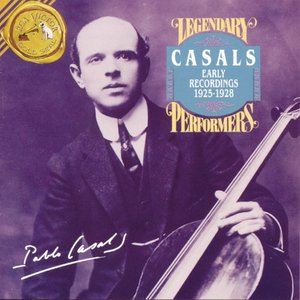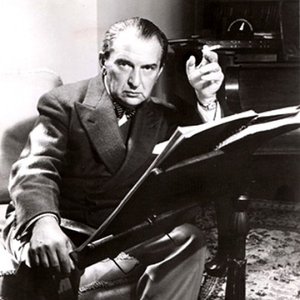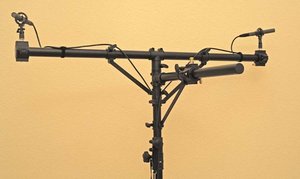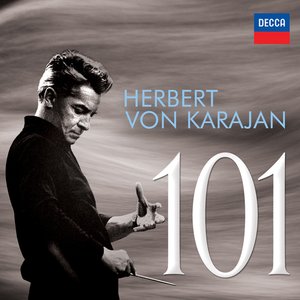Read the first part of “Why—and WHICH!—classical recordings can make your system sound stunning“ here.

In the first installment of this three-part series, my hope was to pique your curiosity about classical recordings that are so good they could make your sound system sound better than you’ve ever heard it. In this part and the next is where the meat is; I’m going to provide a shopper’s guide on what to look for and what to avoid in terms of recording quality.
But first, let’s look at the different categories of recordings I’ll be addressing:
1. Mono Recordings
2. Early Stereo Recordings
3. 70s Analogue Recordings
4. Early Digital Recordings
5. Today’s Digital Recordings
For each of my category descriptions, please keep in mind that there are exceptions to every rule.
1. Mono Recordings

These are the recordings made in the ‘30s, ‘40s, and early to mid-‘50s. From an audio quality standpoint, they’re simply not competitive with later releases, especially in regards to orchestral or piano recordings, which tend to sound too boxy, veiled, or noisy. This has almost nothing to do with the fact they were recorded in mono and almost everything to do with the recordings having been made so long ago, when recording technology and techniques were nowhere near as developed as they are today. Many of the recordings were of broadcasts of live performances captured from radio programs. Sometimes the coughing is louder than the music, which is actually a difficult thing to pull off even if you tried.
Still, there are many seasoned collectors who prefer these early recordings over all others. The reason is not the quality of the sound but the quality of the performances. Some legendary musicians and conductors made recordings only in the mono era, and while I’d never say these musicians and conductors were superior to those who followed, I agree that there was something different—special—about the way they played and interpreted the same familiar music. You could say their playing was freer, and more romantic. Cellist Pablo Casals, violinist Ginette Neveu, and conductor Wilhelm Furtwängler, are such examples, whose abilities combined with their uniqueness is what attracts many to the mono-era recordings.

2. Early Stereo Recordings
I include in this category recordings mainly made in the late ‘50s and early ‘60s. Some classical collectors, of which I’m not one of them, argue that this was the best period for recording quality. They qualify the sound as “warmer”, and more natural, although many tend to use the word “natural” to describe a sound that is more bloomy than life and has a high-frequency roll-off.
It’s true that most recordings from this era sound naturally full-bodied. I believe that’s because they were made before engineers and producers started using too many microphones to record performances. This practice did more harm than good, especially to some of the ‘70s recordings, which sound either excessively brittle or muffled. The early stereo recordings don’t suffer from such problems.
When done right, the typical sound of the early stereo recordings is addictive. It has a warm and rich presence. An example of this is The Art of Song sung by operatic tenor Cesare Valletti. Just listen it on YouTube or any streaming service and you’ll see what I mean—yes, even streamed. Or try any of the orchestral recordings conducted by Ernest Ansermet or Fritz Reiner. For many audio enthusiasts, these recordings offer an exceptionally cohesive portrayal of a live orchestra—of all the different parts of an orchestra playing together as one—a difficult thing to achieve when recording a full orchestra. There is a unique sound signature in these early stereo recordings that escapes most later recordings. Ironically, even live performances don’t have it. It’s a product of the recording techniques of the era.

That said, these recordings are not perfect. Many of them lack clarity and transparency, especially compared to digital recordings of more recent performances. The recording’s bloomy richness often interferes with the individual sounds of the instruments and the hall ambience. Moreover, the noise floor of those recordings is very high, emphasizing tape hiss. If you value in music reproduction the qualities of transparency and accuracy above all else, you won’t be entirely happy with these early stereo recordings. Their sound is more akin to fiction than to the documentary.
Many big and small record companies during this period produced wonderful recordings. But of these, four big labels stand out, having consistently produced great-sounding recordings which are, to this day, readily and inexpensively available in most countries. They are:
RCA Victor (dubbed as Living Stereo)
Decca (sold as London in the US)
EMI (also sold as Angel, Seraphim, or Warner Classics)
Philips

Of these, Decca calls for special mentioning because their sound is easily distinguishable from the rest, a result of a microphone placement technique called “The Decca Tree”. It’s basically a “tree” built with three mics and bars, suspended around 3 meters high over the conductor’s podium (if it’s an orchestral recording) or in the center sweet spot above the musicians’ heads. The Decca Tree is so effective that still today it’s being taught in many professional studio engineering classes.
There is a caveat with the Decca sound, however: it is so vivid and dynamic that it can sound aggressive on a system whose sound leans toward brightness. But on a good, well-balanced system, it’s a knock-out. In comparison, Philips’s and EMI’s early stereo recordings sound gentler and sweeter. The sound of RCA Victor’s Living Stereo has all the virtues of the other labels, but balances them out. For example, its sound is more vivid than that of Philips or EMI, but not as vivid as Decca’s.
The mono and early stereo periods combined constitute what many call the golden era of classical recording; the mono era for the musicians’ particular way of playing music and perhaps for its nostalgic value, and the early stereo era for its addictive sound signatures. But that doesn’t mean that classical recordings made in the following decades were any less interesting or somehow inferior.










Leave a Reply